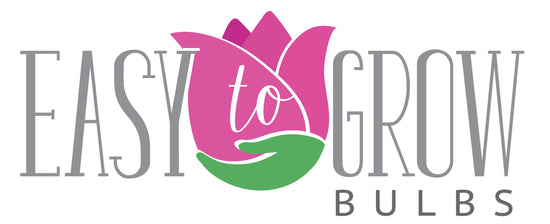How to Make a Gorgeous Spring Bulb Flower Arrangement

Hey, you over there with the flower cutting garden! Remember when you planted all those bulbs in the fall? And you had visions of walking out into your garden in the spring and cutting flowers? Now raise your hand if you stop dead in your tracks because you think you don’t know how to arrange flowers. Okay, that’s too many of you — let’s change that right now, shall we? We’ve got some easy-peasy-lemon-squeezy tips and tricks for you, so let’s get started!
Flower Arranging with Spring Bulbs
You don’t have to have a degree in floral arranging to create some gorgeous spring bulb flower arrangements! Sometimes simpler is better, and then when you feel a little extra inspired, you can spread your wings and try something more adventurous. But, first things first — what flowers are we talking about here? There are some obvious spring flowering bulbs like daffodils, tulips, and ranunculus that are ideal for cutting and arranging, but hop on over to 10 Best Spring Blooming Cut Flower Bulbs to read about our top ten favorites before you make your selections.

We’re going to start with the super simple and work our way up to arrangements that are a bit more challenging — but still doable!
-
Single Flower Arrangements: You might be thinking, “Hang on here! How can you call a single flower in a vase an arrangement? What’s to arrange?” How about a bunch of single flowers in vases? If you’ve got a collection of smallish clear glass containers, or blue vases, or an assortment of multicolored vases, now’s the time to break them out! Arrange them in a row or cluster them in small groupings, then pop one perfect flowering bulb into each. One and done; couldn’t be easier — or more graphic!
-
One Flower Type Arrangements: Choose one type of flowering bulb — let’s say tulips — then place them in your vase. They could be all the same color (Tulip Apricot Beauty would be lovely) or mixed tulip shades (how about Tulip Rainbow Mix?). Bold and beautiful.
-
Mixed Bulb Arrangements: Mix two or more varieties of flowering bulbs together in your arrangement and you’ll start to see a different kind of magic happening. Try tulips and hyacinth, anemone and hyacinth, or daffodils and muscari.
-
Loose Arrangements: Loose arrangements can be all one flower type or mixed bulbs, but the idea is to just use a few so that there is space (fancy designers call it “negative space”) in between the flowers. They’re not tightly packed in, allowing you to appreciate each flower even more. Tulips are perfect here.
-
Tight Arrangements: We didn’t forget about you, all you more-is-better types! If you’ve got a wide variety of different flowering bulbs and you like all the things, here’s where you can unleash your creativity. Take a little more time to cut stems at varying heights to create a full, lush arrangement that’s gorgeous from every angle.
- Bulbs and Branches Arrangements: Let your inner artiste loose with this one. Got some ornamental or flowering branches you can cut? Think pussy willow, curly willow, forsythia, cherry, and lilac. Create your flowering bulb arrangement first (a tight arrangement is best unless you’re using florist foam to keep everything from flopping over), then finish by adding your taller branches for drama and height.
Color Schemes for Flower Arrangements
The way we think of color kind of goes like this: If you love it, then it works. However, if you’re a little unsure and would like a bit more guidance, we’ve got that for you, too:
-
Single Color: Pick just one color and go to town. All red, all pink, all purple — you get the idea. Single color arrangements are bold, graphic, and eye-catching.
-
Monochromatic: This one’s similar to a single-color scheme, but it branches out just a bit. Pick one color — let’s say red — then think of all the different shades of red you dream of. Rosy red, pink, deep burgundy. Using only varying shades of one color creates a soft, cohesive, and yet dynamic arrangement that’s easy to build.
-
High Contrast: Think opposites on the color wheel, or any color + white. Purple and yellow, orange and blue, red and white. This high contrast creates energy, excitement, and drama.
- Pastels: Pastel colors are more dreamy, romantic, and soft, but needn’t be dull (heaven forbid). To keep a sweet pastel arrangement from being ho-hum, choose one shade that’s just a bit stronger than the rest, or add a pastel flower that has a dark center.
- Tags: How To Article
- Katie Elzer-Peters
